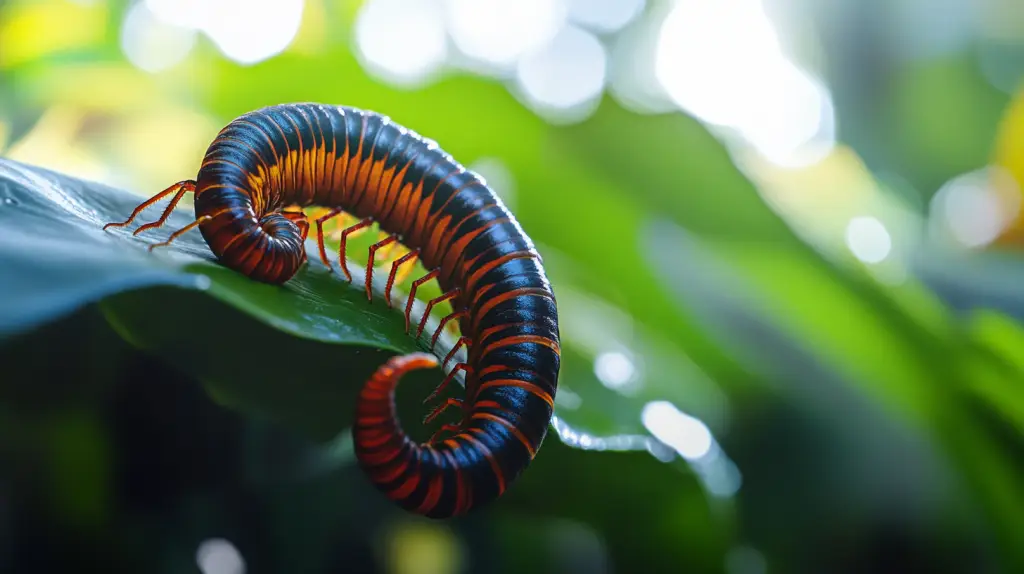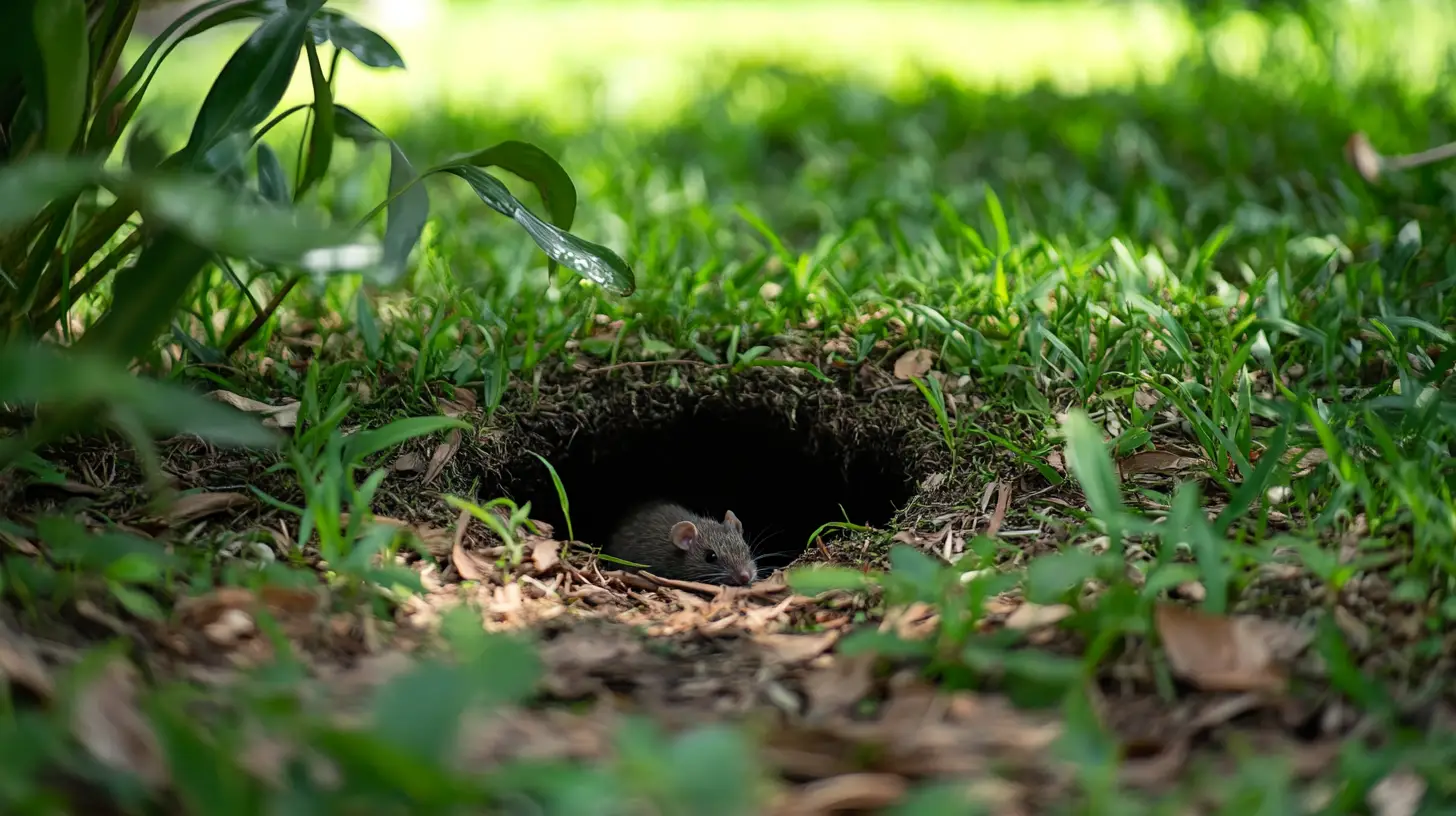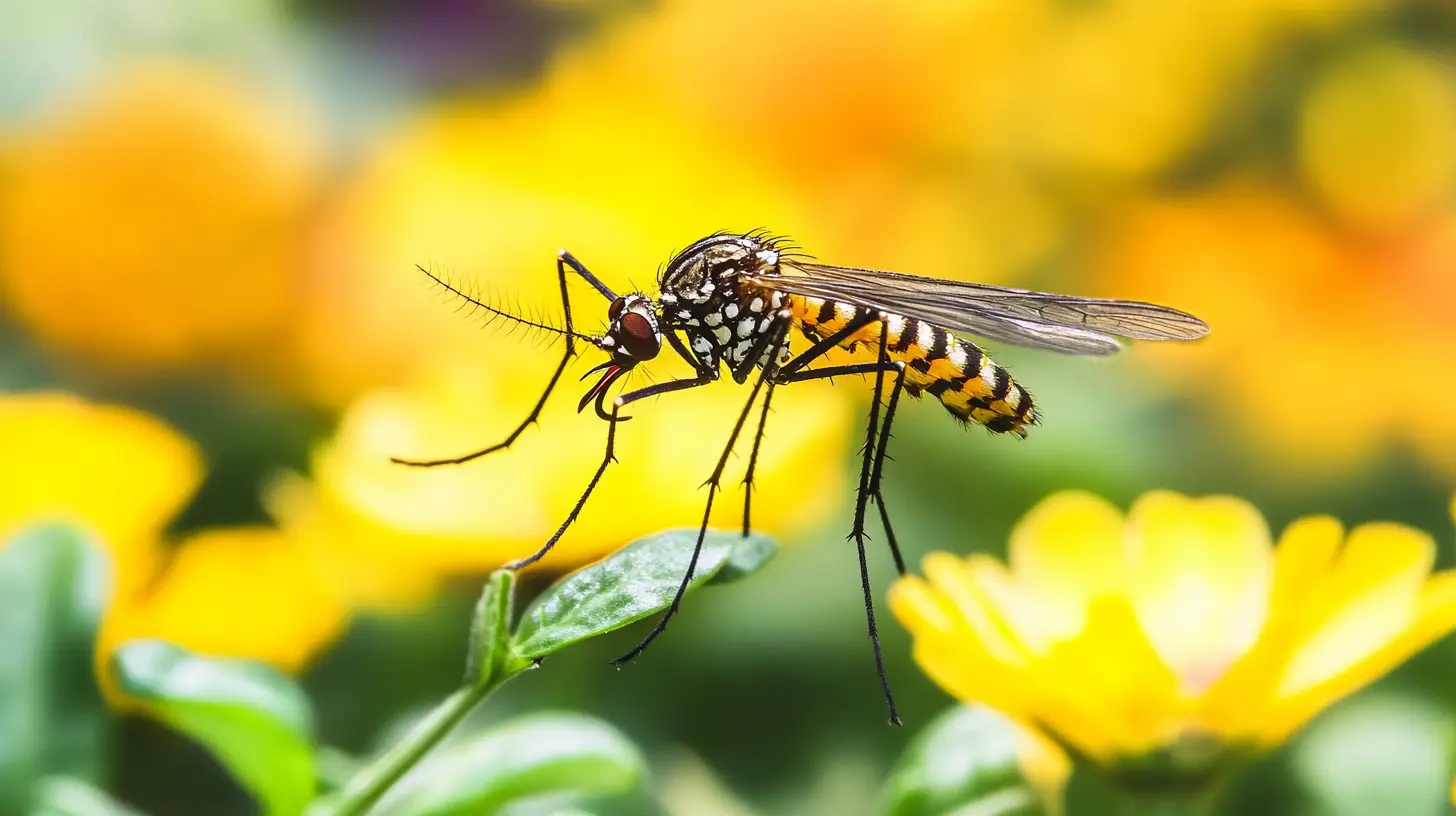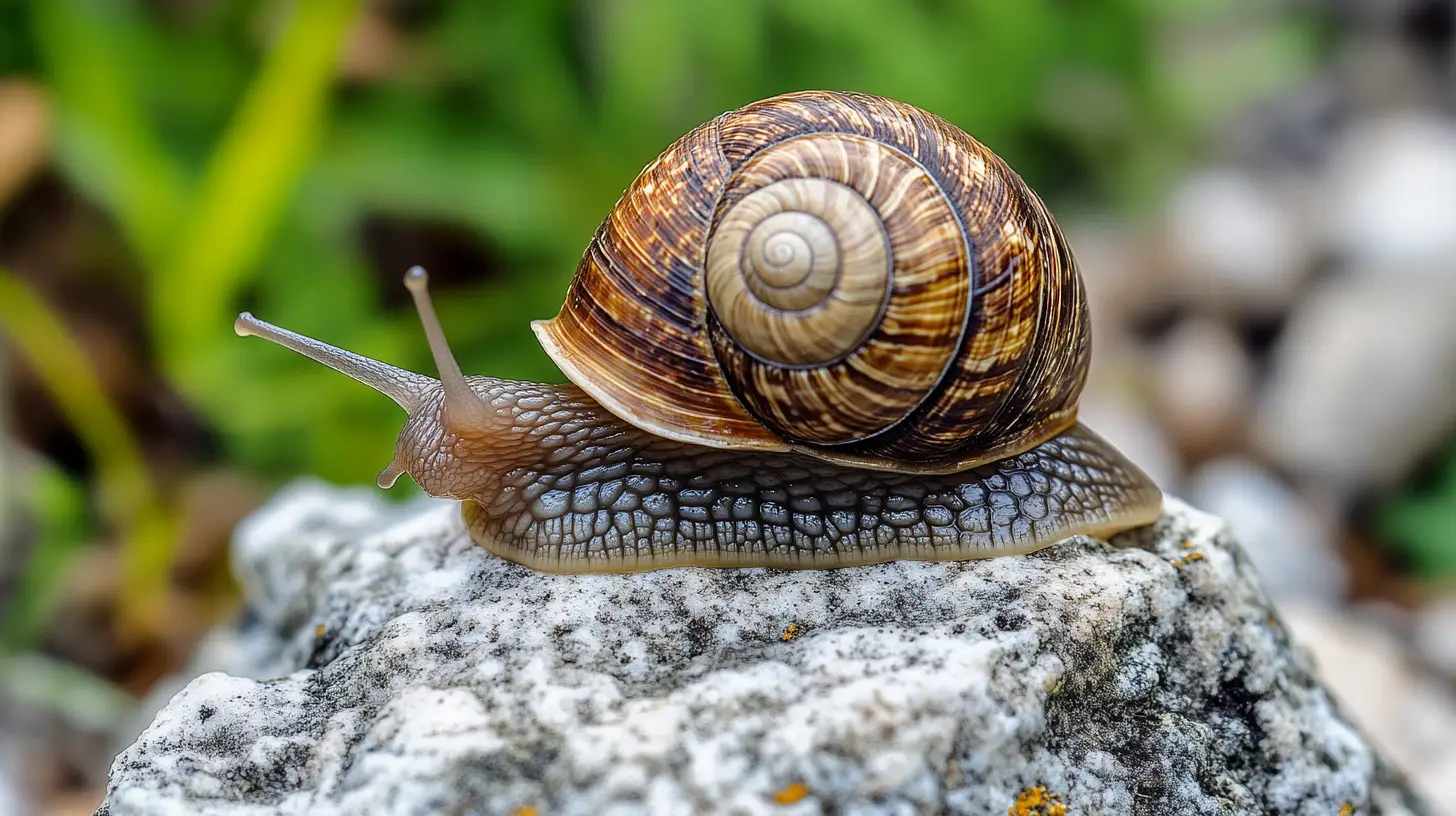
Table of Contents
Millipedes might be fascinating creatures in a biology class, but they can quickly become unwelcome guests in your home. These multi-legged critters tend to invade in large numbers, especially during damp weather, seeking shelter and moisture.
Despite their name meaning “thousand feet,” most millipedes have between 30 to 400 legs. No known species has exactly 1,000 legs—although the record-holder, Eumillipes persephone, has over 1,300 legs! While they’re harmless, their presence can be quite unsettling and even lead to unpleasant odors if not addressed promptly.
You don’t have to live with these creepy crawlers! Understanding why millipedes invade and how to effectively manage them can restore your peace of mind. From natural remedies to preventive measures, there’s a range of strategies to help you get rid of millipedes at bay. With a few simple steps, you can ensure your home remains a millipede-free zone.
Key Takeaways
- Millipedes Thrive in Moist Environments: These arthropods are attracted to damp areas, making it crucial to reduce indoor humidity and address any moisture issues to deter their presence.
- Seal Entry Points: To prevent millipedes from entering your home, inspect for and seal cracks, gaps, and other potential entry points around windows, doors, and walls.
- Maintain Outdoor Areas: Keep gardens and surrounding landscapes clean by removing leaf litter and debris, as these provide breeding grounds and hiding spots for millipedes.
- Utilize Natural Predators: Encourage the presence of birds and frogs in your yard to naturally control millipede populations without resorting to chemical treatments.
- Targeted Chemical Solutions: If infestation persists, consider using insecticides specifically labeled for millipedes, applied as per the manufacturer’s instructions, as a last resort.
Eliminate A Millipede Infestation
Addressing a millipede infestation requires understanding their behavior and habitat. Millipedes typically thrive in moist environments, often seeking refuge in Lakewood Ranch homes during rainy seasons. Follow these expert methods for effective elimination:
- Remove Moisture Sources: Millipedes prefer damp areas. Fix leaking pipes, improve drainage, and use dehumidifiers to reduce indoor humidity levels. This creates an inhospitable environment for millipedes.
- Seal Entry Points: Inspect your home for entry points like cracks in walls or gaps around windows and doors. Seal them with caulk to prevent millipedes from entering your living space.
- Outdoor Maintenance: Millipedes often linger in gardens or mulch beds. Keep these areas tidy by removing leaf litter and debris, which can provide hiding spots and breeding grounds.
- Natural Predators: Encourage natural predators like birds and frogs in your yard. These creatures help keep millipede populations under control naturally, reducing their likelihood of entering your home.
- Chemical Treatments: If necessary, consider using insecticidal sprays or powders as a last resort. Select products labeled specifically for millipedes and follow application instructions carefully to ensure safety.
Implementing these strategies can help get rid of millipedes in your home. By understanding their needs and habitat, you can maintain a millipede-free environment.
Identifying Millipedes And Their Appearance
Millipedes, fascinating arthropods, play crucial roles in decomposition, making them beneficial for your garden. While often confused with centipedes, millipedes have distinct features that help you identify them easily. These creatures have long, cylindrical bodies divided into many segments, each housing two pairs of legs. Unlike their predatory counterparts, millipedes move slowly in search of decaying organic material.
Most millipedes measure between 1 to 4 inches long, with color patterns ranging from brown to black or, occasionally, red and orange. Their sheen gives them a smooth, often glossy appearance. During wet weather, you might spot them wandering into Lakewood Ranch homes as they seek drier habitats.
Understanding these characteristics aids in identifying millipedes. With proper identification, you can carry out the best strategies to get rid of millipedes and maintain a harmonious outdoor environment. Observing their appearance helps in distinguishing these decomposers, ensuring that both agricultural and household settings remain balanced.
Check For Millipedes
When dealing with millipedes, actively inspecting areas prone to infestation is essential. In Lakewood Ranch, where the environment offers a perfect blend of humidity and vegetation, millipedes might find your home quite inviting. Begin by examining basements, crawl spaces, and other damp areas inside your home. Millipedes prefer moisture-rich environments, so these places often attract them. Look for their distinctive long, segmented bodies in these locations.
Next, move outside to your yard. Observing garden beds, mulch, and leaf litter can often reveal millipede activity as they are integral to decomposition processes. During this inspection, notice if millipedes are entering your home near foundations or doorways. Their nocturnal nature means you might see them most often after dusk. If they cluster in large numbers, it’s time to address environmental factors like excess moisture and organic debris, both common in the Lakewood Ranch area.
Track changes in weather patterns, particularly increased humidity and rain, as these conditions drive millipedes indoors. Identifying these trends helps in predicting potential invasions, allowing preemptive action to keep your living space millipede-free.
What Is The Quickest Method To Eliminate Millipedes?
To quickly get rid of millipedes in Lakewood Ranch, use targeted insecticides and strategic environmental management. Combining these methods creates an effective barrier against these pests in humid conditions.
Liquid Insecticides
Liquid insecticides provide swift action in eliminating millipedes indoors and outdoors. Apply these treatments along entry points like door thresholds and windowsills, using a sprayer for even coverage. Selecting products labeled for millipedes ensures effective results while minimizing risks to beneficial garden fauna.
Insecticide Granules
Insecticide granules release active ingredients gradually, providing long-lasting protection against millipedes. Distribute granules around foundations and garden perimeters, focusing on damp areas where millipedes thrive. Granules are especially useful in gardens, as they deter millipede activity without immediate harm to non-target soil organisms.
Aerosol Spot Treatments
Aerosol spot treatments target localized millipede clusters efficiently. Use these formulations in basements and crawl spaces, aiming directly at visible groups. These treatments offer immediate results and help maintain populations within acceptable levels when supplemented with preventative measures.
Additional Techniques
Additional techniques complement chemical approaches, improving the overall strategy. Carry out strategies such as maintaining low indoor humidity and sealing gaps to impede millipede entry. Regularly inspect outdoor areas for organic debris and trim vegetation to reduce habitats. Encourage natural predators like birds and frogs, fostering an network balance that naturally controls millipede numbers.
Preventing Millipede Infestations
By taking proactive steps, you can effectively prevent millipede infestations and maintain a comfortable living environment. Focus on reducing moisture in your home, sealing entry points, and maintaining a tidy outdoor space to deter these pests.
Encourage natural predators and consider using insecticides if necessary. Understanding millipedes’ behavior and habitat is key to managing their presence. Regular inspections and staying aware of weather patterns will help you anticipate and address any potential invasions. With these strategies in place, you can enjoy a millipede-free home while appreciating their role in the network.
Frequently Asked Questions (FAQs)
What are the main reasons millipedes invade homes?
Millipedes invade homes primarily during damp weather as they seek moisture and shelter. They enter through cracks and openings, especially when outdoor conditions become too humid, prompting them to find hiding spots within homes.
Are millipedes harmful to humans?
No, millipedes are not harmful to humans. They are harmless creatures that do not bite or sting. However, their presence can be unsettling for some, and they may emit unpleasant odors when disturbed or crushed.
How can I prevent millipede infestations in my home?
To prevent millipede infestations, reduce moisture by fixing leaks and using dehumidifiers, seal entry points, clear outdoor debris, and maintain gardens. Encouraging natural predators like birds can also help control their population.
What natural remedies can help manage millipede infestations?
Natural remedies include maintaining dry environments, using essential oils like peppermint or tea tree oil, and encouraging predators such as frogs and birds. These methods create an unwelcoming environment for millipedes.
How can I identify a millipede in my home or garden?
Millipedes have long, cylindrical bodies with many segments, each bearing two pairs of legs. They typically measure 1 to 4 inches long with color patterns ranging from brown to black, sometimes reddish or orange.
Why are millipedes beneficial for gardens?
Millipedes contribute to decomposition, breaking down organic matter and enriching soil health. Their role in gardens is beneficial as they help recycle nutrients, promoting plant growth and maintaining a balanced ecosystem.
Which areas of my home should I inspect for millipedes?
Inspect basements, crawl spaces, and damp areas like garden beds and mulch for signs of millipedes, especially after rainfall or during periods of high humidity.
What weather conditions increase millipede activity?
Increased humidity and rain encourage millipedes to seek shelter indoors. Tracking weather patterns can help predict potential invasions, allowing for proactive measures to keep homes millipede-free.
What chemical treatments are effective for millipede control?
Targeted insecticides, including granules and aerosols, effectively manage millipede populations. Applying insecticides around entry points and damp areas can provide swift and long-lasting protection.
How can I complement chemical treatments for better millipede control?
Combine chemical treatments with environmental management, like maintaining low indoor humidity, sealing gaps, and leveraging natural predators, to enhance overall millipede control strategies.









